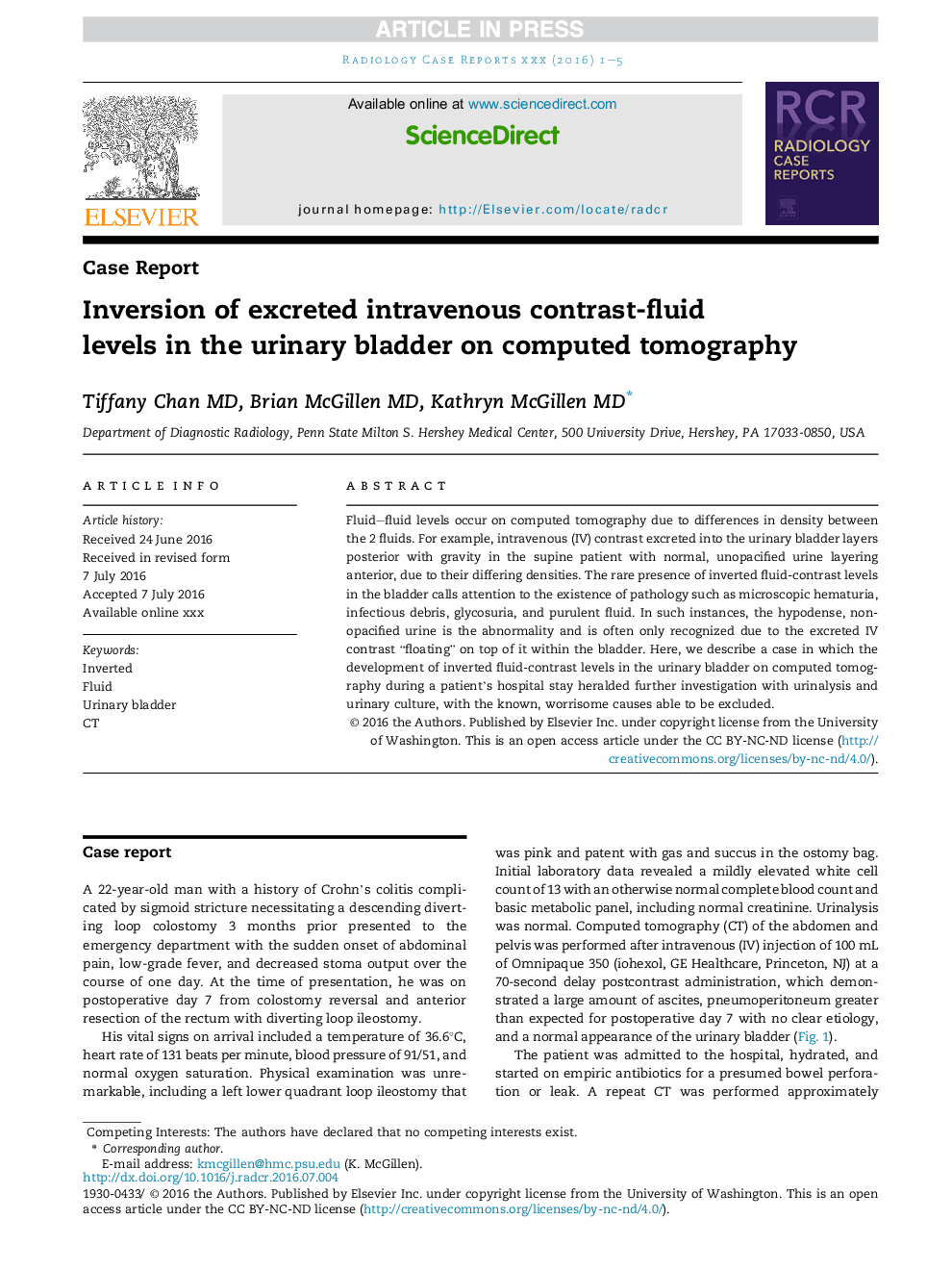| Article ID | Journal | Published Year | Pages | File Type |
|---|---|---|---|---|
| 8825536 | Radiology Case Reports | 2016 | 5 Pages |
Abstract
Fluid-fluid levels occur on computed tomography due to differences in density between the 2 fluids. For example, intravenous (IV) contrast excreted into the urinary bladder layers posterior with gravity in the supine patient with normal, unopacified urine layering anterior, due to their differing densities. The rare presence of inverted fluid-contrast levels in the bladder calls attention to the existence of pathology such as microscopic hematuria, infectious debris, glycosuria, and purulent fluid. In such instances, the hypodense, nonopacified urine is the abnormality and is often only recognized due to the excreted IV contrast “floating” on top of it within the bladder. Here, we describe a case in which the development of inverted fluid-contrast levels in the urinary bladder on computed tomography during a patient's hospital stay heralded further investigation with urinalysis and urinary culture, with the known, worrisome causes able to be excluded.
Keywords
Related Topics
Health Sciences
Medicine and Dentistry
Radiology and Imaging
Authors
Tiffany MD, Brian MD, Kathryn MD,
